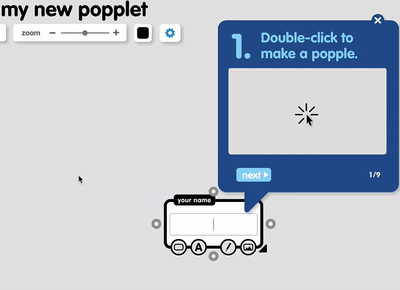A concept map (or mind map) is a visual tool to help a learner organize and represent what he or she knows. They include concepts, usually enclosed in circles or boxes of some type, and relationships between these concepts indicated by a connecting line linking two concepts. Words on or between the line, referred to as the linking words/phrases, explain the relationship between the two concepts.
There are many kinds of concept maps. Perhaps the most common are: hierarchical concept maps, spider concept map, and flow charts.
Hierarchical concept maps demonstrate the hierarchy between concepts. They start with the most important topic at the top that will be used to organize all the other content (e.g. “Presidents,” “Science Games,” or “Environmental Policy”). Then additional concepts are written, connected with lines (often with arrows to show directionality of the relationship). For instance, relationships like A causes B (“sugar causes cavities”) or A includes B (“Presidents include Abraham Lincoln”) can be visualized with a concept with an arrow pointing to another concept, and a relational word in between.

Spider concept maps have the keyword in the middle as a central concept, with various sub-topics that branch out. These sub-topics also have additional sub-topics, and so on.
Flowcharts are diagrams that lead the viewer down various branching paths based upon conditions. For example, a flowchart to diagnose the root cause of a technical problem may ask: “Is the warning light flashing?” Yes / No. The flowchart can then branch two or more different directions based upon whether something is true or false. By following the path of a flowchart to beginning to end, the viewer can reach a certain conclusion.
Theory
Concept maps are closely related to constructivist learning theory, which posits that learners actively construct new knowledge; discovery learning theory and David Ausubel’s theory of meaningful learning. Joseph D. Novak developed concept mapping in 1970s at Cornell University to capture students’ emerging science knowledge. His work is based on Ausubel, who underscored the importance of prior knowledge for learning.
Concept Mapping Ideas for the Classroom
Concept maps are an excellent way to improve common ground between people. For example, a teacher can ask students to create various concept maps to demonstrate their current understanding of various topics.
- Learners can create Personal Learning Network Maps (based upon connectivist learning theory) that can demonstrate all the various sources of knowledge that they use to learn.
- Students can create concept maps while working on a research project to help keep track of their knowledge of a research topic or to help outline a research paper.
- Students of English or foreign language courses can create vocabulary word maps to demonstrate the relationship between various words, definitions, word roots and affixes.
Useful concept mapping tools include:
- Poplet – an excellent mind map creation tool that also allows images, hand drawn sketches, and YouTube video clips. Also supports collaboration, making it useful for group work or for teacher support.

- CMap Tools – a popular mind map tool developed by the Institute for Human and Machine Cognition.
References
- Nesbit, J., & Adesope, O. (2006). Learning With Concept and Knowledge Maps: A Meta-Analysis Review of Educational Research, 76 (3), 413-448 DOI: 10.3102/00346543076003413
Redford, J., Thiede, K., Wiley, J., & Griffin, T. (2012). - Concept mapping improves metacomprehension accuracy among 7th graders. Learning and Instruction, 22 (4), 262-270 DOI: 10.1016/j.learninstruc.2011.10.007



